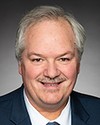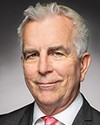If there's one single policy change we can make in sports in Canada to protect kids' brains, it's eliminating headers in soccer for kids under the age of 12, certainly, and probably under the age of 14 would be even better.
Just for context, there are 550,000 youth hockey players in Canada and 750,000 youth soccer players. By participation, it's by far the largest sport. The majority of the exposures in soccer happen in practice with an adult lobbing a ball at a child, so it's entirely preventable. As a former athlete, I actually don't really buy that kids need to learn to play the ball in the air so much that it should equate to a factor of an activity that we know gives them brain injury.
When you think about CTE and CTE risk, it's important to understand that it's not the number of concussions that athletes have sustained; it's the number of total impacts that athletes get during the course of their career.
In the United States, they banned headers for soccer in 2016. They've recently done it in the United Kingdom. We're now behind.
One interesting thing with this is that, if you're talking about athletic performance and reaction time, some of the research that's been done just down the street at Western University has looked at those impacts and reaction times. It's found that for football players who see exposures in practice and games during the course of a season, it sometimes makes them 15% to 20% slower during the course of the year in terms of their reaction time.
Even if you don't care about the health of these kids and if you don't care about the ethics of exposing children to an activity that potentially gives them brain injury, just for pure athletic performance, we shouldn't be hitting kids in the head.
Thank you for the question.






